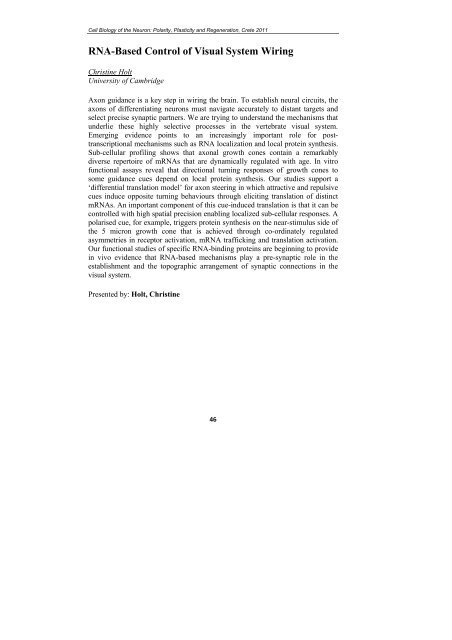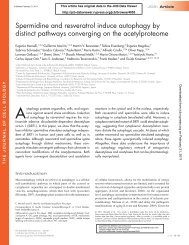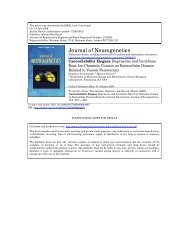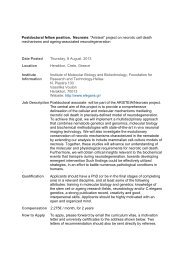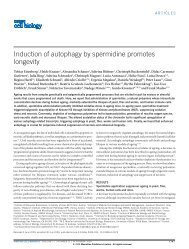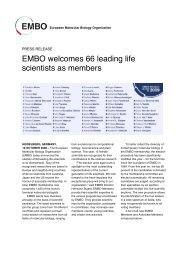CELL BIOLOGY OF THE NEURON Polarity ... - Tavernarakis Lab
CELL BIOLOGY OF THE NEURON Polarity ... - Tavernarakis Lab
CELL BIOLOGY OF THE NEURON Polarity ... - Tavernarakis Lab
You also want an ePaper? Increase the reach of your titles
YUMPU automatically turns print PDFs into web optimized ePapers that Google loves.
Cell Biology of the Neuron: <strong>Polarity</strong>, Plasticity and Regeneration, Crete 2011<br />
RNA-Based Control of Visual System Wiring<br />
Christine Holt<br />
University of Cambridge<br />
Axon guidance is a key step in wiring the brain. To establish neural circuits, the<br />
axons of differentiating neurons must navigate accurately to distant targets and<br />
select precise synaptic partners. We are trying to understand the mechanisms that<br />
underlie these highly selective processes in the vertebrate visual system.<br />
Emerging evidence points to an increasingly important role for posttranscriptional<br />
mechanisms such as RNA localization and local protein synthesis.<br />
Sub-cellular profiling shows that axonal growth cones contain a remarkably<br />
diverse repertoire of mRNAs that are dynamically regulated with age. In vitro<br />
functional assays reveal that directional turning responses of growth cones to<br />
some guidance cues depend on local protein synthesis. Our studies support a<br />
‘differential translation model’ for axon steering in which attractive and repulsive<br />
cues induce opposite turning behaviours through eliciting translation of distinct<br />
mRNAs. An important component of this cue-induced translation is that it can be<br />
controlled with high spatial precision enabling localized sub-cellular responses. A<br />
polarised cue, for example, triggers protein synthesis on the near-stimulus side of<br />
the 5 micron growth cone that is achieved through co-ordinately regulated<br />
asymmetries in receptor activation, mRNA trafficking and translation activation.<br />
Our functional studies of specific RNA-binding proteins are beginning to provide<br />
in vivo evidence that RNA-based mechanisms play a pre-synaptic role in the<br />
establishment and the topographic arrangement of synaptic connections in the<br />
visual system.<br />
Presented by: Holt, Christine<br />
46


